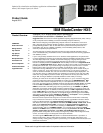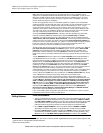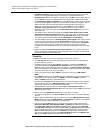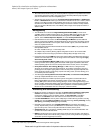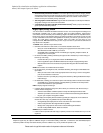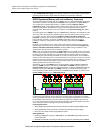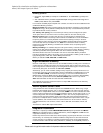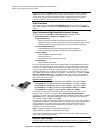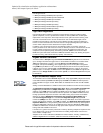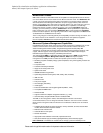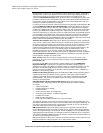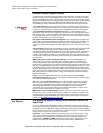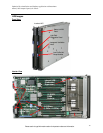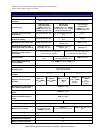
Optimized for virtualization and database applications with maximum
memory and compute capacity in a blade
Please see the Legal Information section for important notices and information.
9.
ESX Server, including full VMFS support across FC SAN, iSCSI SAN, and NAS, and 4-way
VSMP. Rather than management through a Service Console based on a Linux operating
system, ESXi relies on aggregate management tools, including VirtualCenter, the Remote
Command Line interface and the introduction of CIM for standards-based and agentless
hardware monitoring. Licensing works the same as for “standard” ESX Server.
Disk Controllers
HX5 models support an optional LSI 1064E SAS/SATA controller (required for SSD support).
This controller supports up to two internal solid-state drives and offers hardware RAID-0/1/1E
support.
High Performance/High-Availability Internal Storage
The HX5 supports up to two fixed 1.8-inch solid-state drives (SSDs) internally:
• SATA-based solid-state — 50GB capacity (100GB maximum)
High I/O Performance
– Offers up to 8X more IOPS than HDDs (67/33% read/write OLTP transaction base mix);
– Optimized for heavy mix of read and write operations, such as transaction processing, media
streaming, surveillance, file copy, logging, backup / recovery, and business Intelligence
Lower-Cost IOPS Performance
– Yields better $/IOPS: lower capacity (GB) required to achieve higher IOPS
– Consumes less energy and produces less heat than a conventional disk drive
Superior Uptime
– 3X the availability of mechanical disk drives
– No moving parts to fail
– Enterprise wear-leveling to extend life even further
Full OS Support
– Supports all ServerProven OSes
Due to the statistically higher failure rates for traditional spinning media, IBM recommends the
use of the solid state drives (SSDs) as an alternative. They store data on flash memory chips,
rather than on magnetic media. Like HDDs, SSDs can be used as boot media and for random
access storage. However, SSDs offer higher thresholds of shock and vibration, and a higher
operating temperature range (between 0 and 70 degrees C). This yields a failure rate only 1/3
that of HDDs (approximately 3,000,000 hours MTBF vs. 1,000,000 hours). In addition, the IBM
50GB 1.8” Solid State Drive requires only 2W. This reduces the storage power requirement
and heat output by as much as 80%, compared to 2.5-inch HDDs. If used as a boot device, no
special device drivers are required.
High IOPS SSD PCIe Adapters
IBM 160GB High IOPS SS Class SSD PCIe Adapter (x4 Gen 1—100K IOPS, 750MBps)
IBM 320GB High IOPS SS Class SSD PCIe Adapter (x4 Gen 1—100K IOPS, 750MBps)
IBM 320GB High IOPS MS Class SSD PCIe Adapter (x4 Gen 1—100K IOPS, 750MBps)
IBM 320GB High IOPS SD Class SSD PCIe Adapter (x8 Gen 2—200K IOPS, 1.5GBps)
IBM 640GB High IOPS MLC Duo Adapter (x8 Gen 2—200K IOPS, 1.5GBps)
For read-intensive transactional workloads requiring extreme IOPS performance, such as
database, video-on-demand, and caching, IBM offers High IOPS SSD PCIe Adapters,
equivalent to the IOPS output of approximately 500
5
3.5-inch 600GB 15K SAS HDDs, with 99%
lower latency (30 µs), and 7.7x the bandwidth of a HDD. On a performance-per-watt basis,
these adapters outperform HDDs by up to 445x
6
.
Because these adapters go in PCIe slots, rather than drive bays, they can be used in addition to
standard HDDs and SSDs. This makes them ideal for virtualized servers running multiple tasks,
requiring both write- and read-intensive storage media. As flash media they also offer a
predictable lifetime, compared to the sporadic failure rate of HDDs, using N+1 chip-level
redundancy and 11-bit ECC protection.
Note: The High IOPS Adapters require a BPE4 expansion unit.
Additional storage is available via the BladeCenter S chassis.
If you need more storage space, terabyte capacities are possible with optional external direct-
attach, NAS, and SAN storage solutions.
Ex
ternal Tape Storage
The
HX5
supports
various external rack
-
mounted SAN
-
attached tape drives
. Supported tape



